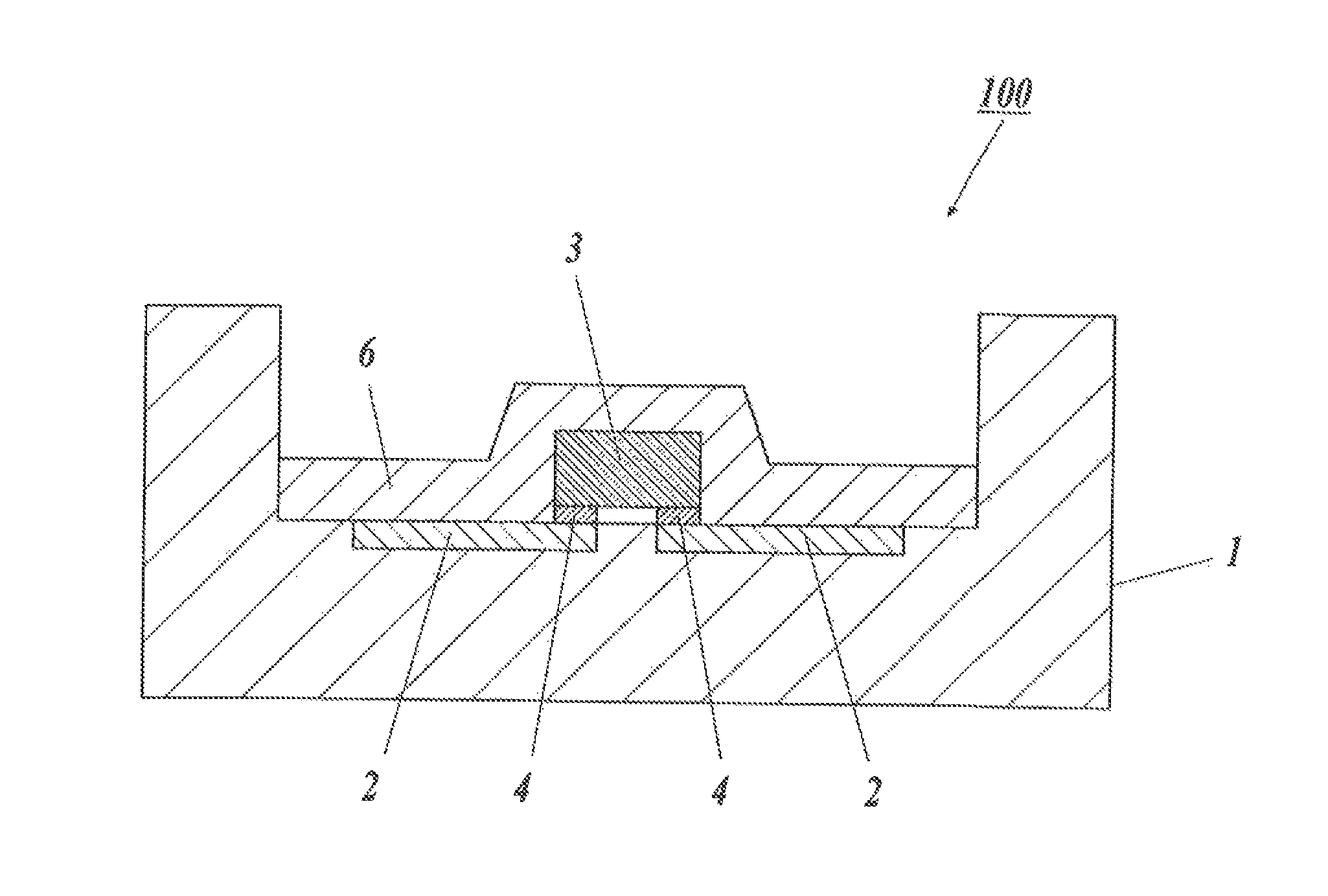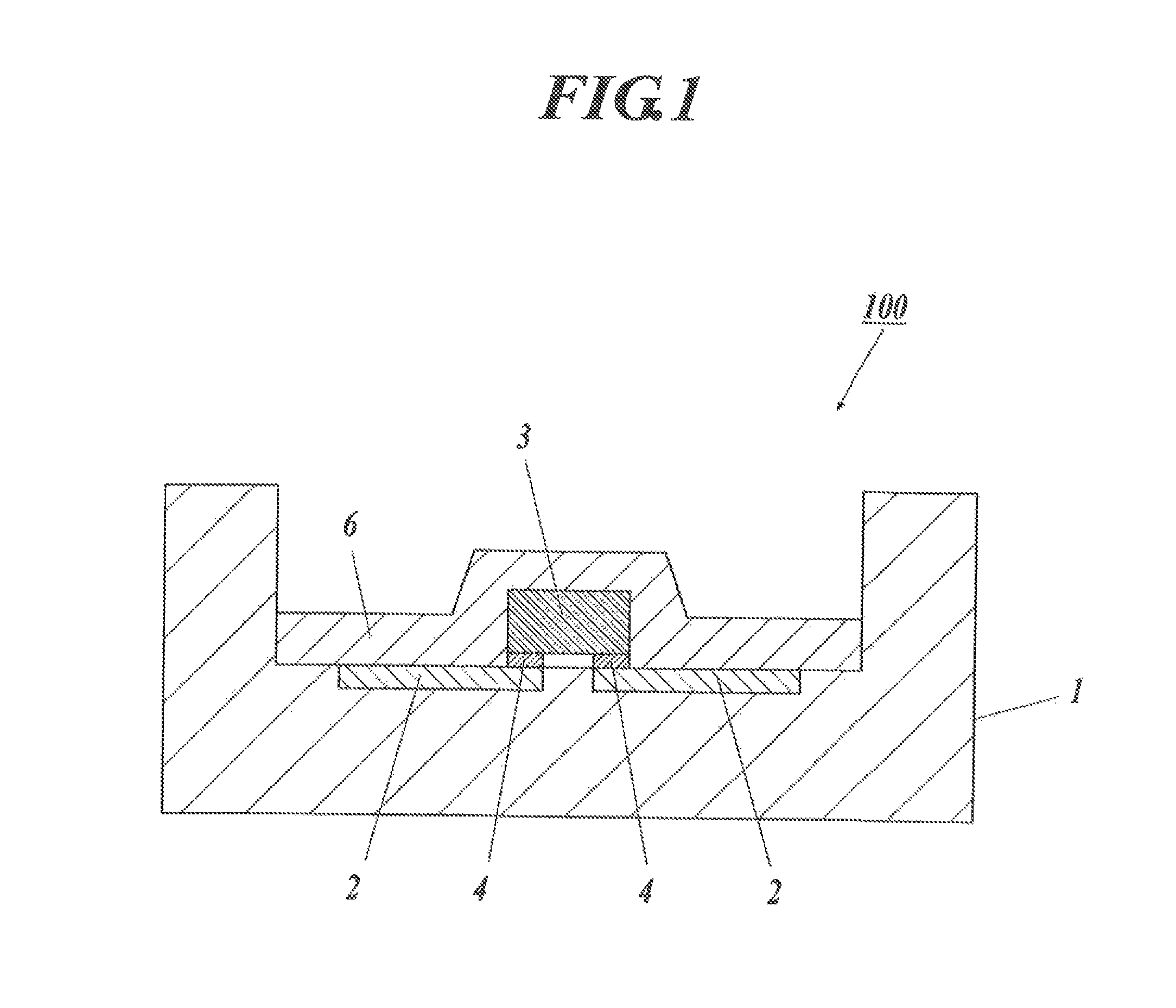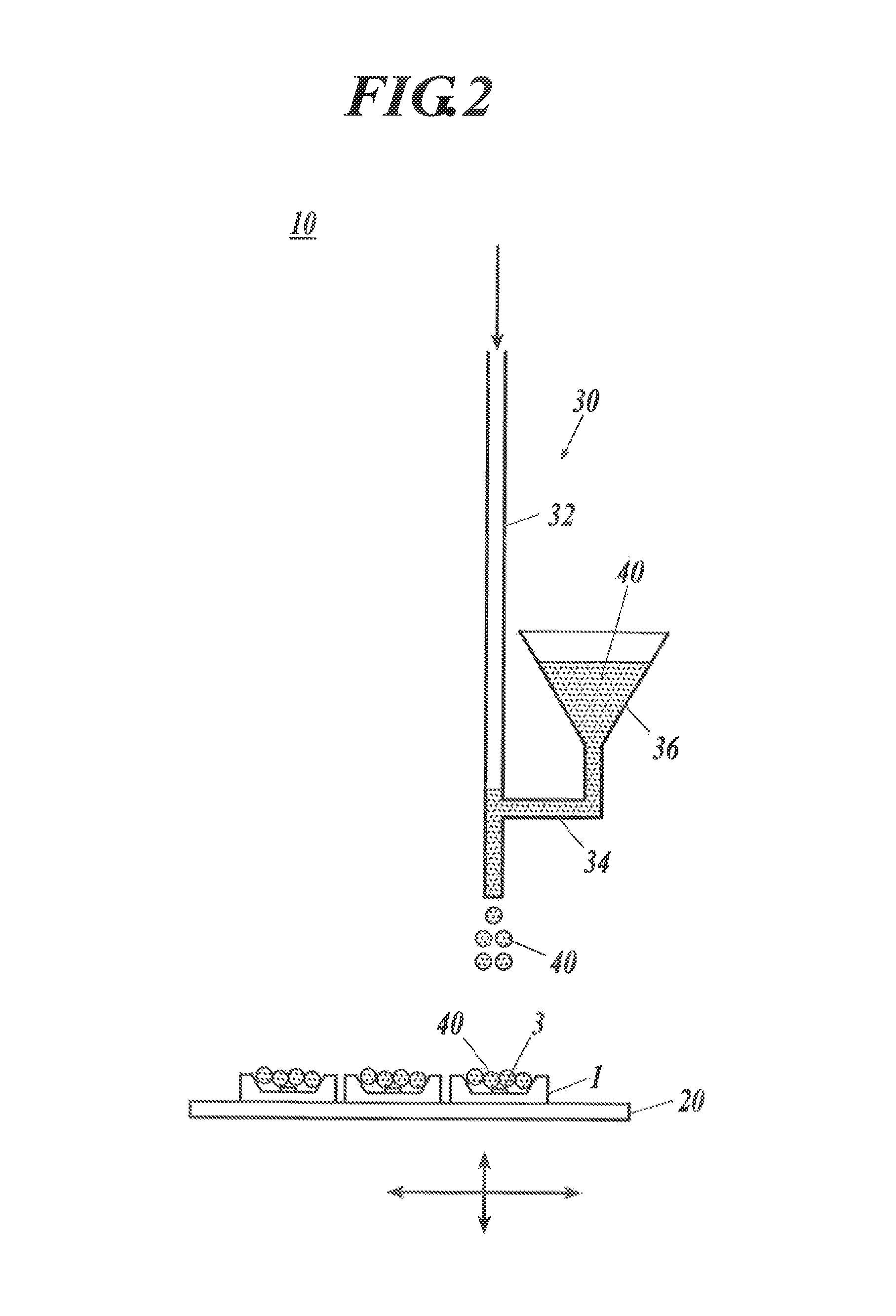Manufacturing method for light emitting device and phosphor mixture
a manufacturing method and technology of phosphor, which are applied in the field of manufacturing methods of light emitting devices and phosphor mixtures, can solve the problems of phosphor not being collected or reused, sealing agent may deteriorate by heat generated by light emitting elements, etc., and achieve the reduction of chromaticity variation of manufactured light emitting devices, the effect of increasing the strength of phosphor layers
- Summary
- Abstract
- Description
- Claims
- Application Information
AI Technical Summary
Benefits of technology
Problems solved by technology
Method used
Image
Examples
example 1
(2.4) Example 1
[0139]The first liquid mixture was produced by mixing 0.04 g of synthetic mica (MICROMICA MK-100 with an average particle size of 4 μm manufactured by Co-op Chemical Co., Ltd.) and 0.81 g of the phosphor into 1 g of propylene glycol. This first liquid mixture was sprayed to be applied onto the LED devices by using the application device shown in FIG. 2 and dried for one hour at 50° C., whereby phosphor layers were formed.
[0140]After that, from above the phosphor layers, a polysiloxane dispersion liquid (14 mass % of polysiloxane and 86 mass % of IPA) was sprayed to be applied thereto as the second liquid mixture and fired for one hour at 150° C., whereby the phosphor of the phosphor layers was fixed, and wavelength converting parts were formed.
[0141]The spray application condition was the same as that of the comparative example 3.
example 2
(2.5) Example 2
[0142]The first liquid mixture was produced by mixing 0.04 g of inorganic particles (RX300 with a particle size of 7 nm manufactured by Nippon. Aerosil Co., Ltd.), 0.04 g of smectite (LUCENTITE SWN with an average particle size of 50 nm manufactured by Co-op Chemical Co., Ltd.) and 0.77 g of the phosphor into 1 g of ethylene glycol. This first liquid mixture was sprayed to be applied onto the LED devices by using the application device shown in FIG. 2 and dried for one hour at 50° C., whereby phosphor layers were formed.
[0143]After that, from above the phosphor layers, a polysiloxane dispersion liquid (14 mass % of polysiloxane and 86 mass % of IPA) was sprayed to be applied thereto as the second liquid mixture and fired for one hour at 150° C., whereby the phosphor of the phosphor layers was fixed, and wavelength converting parts were formed.
[0144]As to the spray application condition, the application speed of the first liquid mixture was 50 mm / s, the spray pressure ...
example 3
(2.6) Example 3
[0145]The first liquid mixture was produced, by mixing 0.065 g of inorganic particles (RX300 with a particle size of 7 nm manufactured by Nippon Aerosil Co., Ltd.), 0.025 g of smectite (LUCENTITE SWN with an a verage particle size of 50 nm manufactured by Co-op Chemical Co., Ltd.) and 1 g of the phosphor into 1 g of propylene glycol and 0.75 g of isopropyl alcohol. This first liquid mixture was sprayed to be applied onto the LED devices by using the application device shown in FIG. 2 and dried for one hour at 50° C., whereby phosphor layers were formed.
[0146]After that, from above the phosphor layers, a polysiloxane dispersion liquid (14 mass % of polysiloxane and 86 mass % of IPA) was sprayed to be applied thereto as the second liquid mixture and fired for one hour at 150° C., whereby the phosphor of the phosphor layers was fixed, and wavelength converting parts were formed.
[0147]The spray application condition was the same as that of the example 2.
PUM
| Property | Measurement | Unit |
|---|---|---|
| aspect ratio | aaaaa | aaaaa |
| boiling point | aaaaa | aaaaa |
| boiling point | aaaaa | aaaaa |
Abstract
Description
Claims
Application Information
 Login to View More
Login to View More - R&D
- Intellectual Property
- Life Sciences
- Materials
- Tech Scout
- Unparalleled Data Quality
- Higher Quality Content
- 60% Fewer Hallucinations
Browse by: Latest US Patents, China's latest patents, Technical Efficacy Thesaurus, Application Domain, Technology Topic, Popular Technical Reports.
© 2025 PatSnap. All rights reserved.Legal|Privacy policy|Modern Slavery Act Transparency Statement|Sitemap|About US| Contact US: help@patsnap.com



